In its Centenary year, Woodlands is arguably the most under-rated of Melbourne’s great Sandbelt courses but it remains one of this country’s finest and enduring layouts.
By Mike Clayton
The enduring merit of a golf course is measured by the quality of the architecture. So often we hear that such and such is a “great course” when what the person is really saying is that they had a great experience playing it. Give most golfers a great experience and they draw the bow all the way back and judge the golf course to be great. There is only one great course in Australia if the measure is a course that sits comfortably with the best 10 or 15 courses in the world. Great has to mean great and only the West Course at Royal Melbourne sits comfortably with places like Pine Valley, Cypress Point, the Old Course at St Andrews or The National Golf Links of America.
The reputation of the course has an influence on people’s perception of its quality. The condition also and, obviously, the views do much to add to the joy and exhilaration of playing a hole. Take away the ocean from the wild and brilliant par-5 5th at New South Wales Golf Club and it would undoubtedly be roundly criticised, yet playing it is one of the truly awesome experiences in Australian golf.
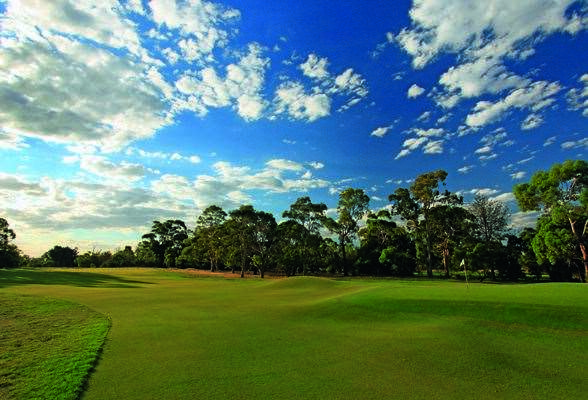 The short par-4 4th is driveable for the long hitter but it demands absolute precise hitting, with the driver or a wedge. PHOTO: GARY LISBON
The short par-4 4th is driveable for the long hitter but it demands absolute precise hitting, with the driver or a wedge. PHOTO: GARY LISBONDifficulty usually earns extra points in the eyes of critics, as does a perception of ‘fairness’ – whatever that means.
Not one of those things – condition, views, reputation, difficulty or fairness – has much to do with the quality of the architecture, although a poorly conditioned course – most often in the form of soft greens – can take away from how the course is designed to play. They can all add or detract from the experience of playing and who of us are not swayed by a beautiful place or ideal conditions?
Woodlands is one of the best courses on the Melbourne Sandbelt yet it has rarely been seen as the equal of other more famous clubs.
Unlike Royal Melbourne, Kingston Heath, Metropolitan, Victoria, Huntingdale or Yarra Yarra it hasn’t regularly held big tournaments. It isn’t a part of the ‘Sandbelt’ marketing group of clubs despite its architecture having all of the characteristics of the Sandbelt. It isn’t directly off Warrigal Road as Huntingdale, Commonwealth, Metropolitan, Kingston Heath and Yarra Yarra are and nor is is tacked onto the pocket of the Sandbelt that is home to Royal Melbourne and Victoria.
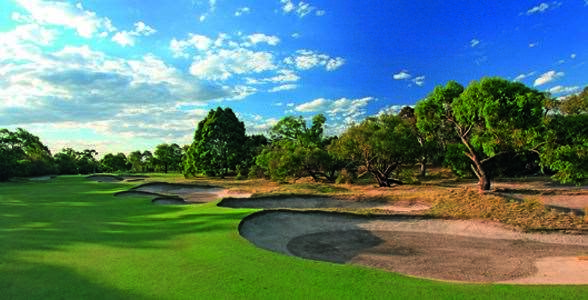 A majestic scheme of bunkers hugs the edge of the par-4 3rd. PHOTO: GARY LISBON
A majestic scheme of bunkers hugs the edge of the par-4 3rd. PHOTO: GARY LISBONNor, and perhaps most importantly, can it boast of having attracted a day of Dr Alister MacKenzie’s time when he made his game-altering trip to Australia in the last few months of 1926.
But, if a course is to be judged by the questions it asks, by the quality of its holes or by the quality of the man-made construction then Woodlands deserves to sit among the best half-dozen courses in Melbourne and the best 15 in the country.
Golfers talk of ‘old-fashioned design’ and one characteristic most associated with that notion is small greens. It probably comes from a perception that many courses built in the era after World War II up until the end of the 1980s featured big greens. Many did and that suggested the old courses – those built in the extraordinarily productive era from just before World War I until the Depression – were characterised by small greens. Of course it was not the case that the great architects including MacKenzie, Harry Colt, Tom Simpson, C.B. Macdonald, A.W. Tillinghast and Donald Ross built only small greens. MacKenzie’s 2nd, 5th and 14th greens at Augusta and his 16th green at Cypress Point are huge, as is MacDonald’s 6th at The National. Simpson built a couple of greens almost 50 metres long at his wondrous Morfontaine in Paris.
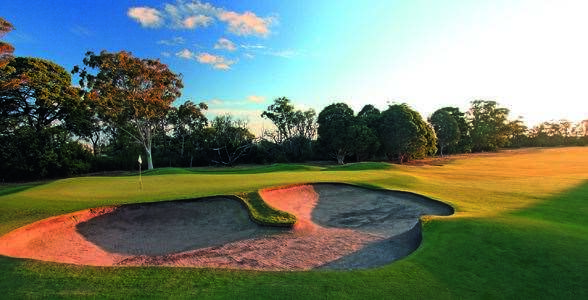 The shortish par-5 2nd offers a birdie opportunity early in the round. PHOTO: GARY LISBON
The shortish par-5 2nd offers a birdie opportunity early in the round. PHOTO: GARY LISBONWoodlands, though, perhaps more than any course I have played can be characterised as having what, by any measure, would be classed as small greens.
The course is not particularly long especially in this age of obscene power. What it asks for are a series of relentlessly accurate tee shots and then precise iron shots. And if you mess up either of those you need an extraordinary short game in order to save pars.
Woodlands opens with perhaps its least good hole – remembering every course has a ‘least-good’ hole. Turning hard to the left, the tee shot is the widest and most forgiving on the course and the short iron up to the green isn’t particularly difficult or interesting. It’s not a poor hole and like the 1st hole at Royal Melbourne it is a simple opening to the round. Like the Royal Melbourne opener it is not a real indication of what is to come.
After the shortish par-5 2nd, the following three holes are of real merit and deserving of study. The 3rd, a short par-4 turning to the right, asks for a tee shot placed safely at the corner of the dogleg with a fairway wood or a long iron. From there the pitch is probably the single most difficult short wedge shot in Australia. The small green sits well above the natural grade of the fairway and is protected both front and to the left by fearsome bunkers. Saving a par here if you miss the green is extraordinarily difficult – as it should be on a drive and pitch hole.
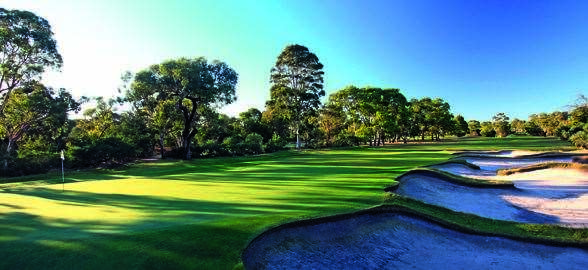 The sand shot from the left bunkers on the long par-4 10th is the toughest on the course, according to Clayton. PHOTO: GARY LISBON
The sand shot from the left bunkers on the long par-4 10th is the toughest on the course, according to Clayton. PHOTO: GARY LISBONThe next is an even shorter 4 at 251 metres. It is driveable but the green again sits high above the surrounding ground and this time there is no sand defending it. Rather, the steep side banks are cut short and that makes pitching from anything but the ideal line down the green really difficult. It is a hole that is simple if you stay in position – and here that ideal place is right in the middle of the fairway – but as soon as you stray from that ideal it is increasingly more difficult to get back into the right place.
The 5th hole is one of the better par-3s on the Sandbelt and that marks its class. Again the green is small, surrounded by typically difficult bunker shots and only the most accurate of middle iron shots will find the green.
The 15th at Kingston Heath and the 5th at Royal Melbourne are more spectacular holes because they are played over more spectacular land but it is holes like Woodlands’ 5th and Commonwealth’s 15th that show what is possible on seemingly unremarkable flat land.
The most difficult run of holes comes either side of the turn. The long one-shot 8th is played to the only green altered from the original 18 and for an architect one of the most difficult tasks is to make a single green and have it fit with the other 17. The 9th and 10th holes are both long par-4s, the latter the more difficult of the two because its tiny green tips from left to right and makes the shot from the left bunker the hardest on the course to get anywhere near the pin.
The finish, too, is made up of four terrific holes that continue to ask for precision and some power. The three-shot 15th was described by American architect Tom Doak as one of the game’s best flat par-5s. The tee shot is unremarkable but cross bunkers dominate the second shot for the average hitters and into the southerly wind even the stronger players have to consider how best to avoid them. A run of bunkers beginning about 60 metres short of the green sits along the right side of the fairway and they leave that horrible length bunker shot that no one, not even Tiger Woods, is very good at judging. The final piece of the 15th-hole puzzle is the trough guarding the front of the green. When the pin is forward it takes fine judgment to get the pitch just right.
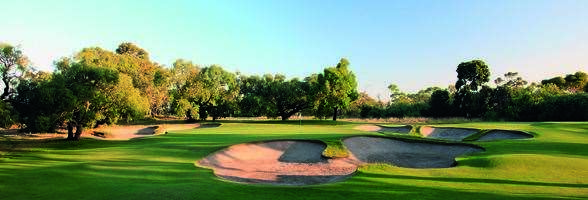 The shortest of Woodlands’ par-3s has sand surrounding the target. PHOTO: GARY LISBON
The shortest of Woodlands’ par-3s has sand surrounding the target. PHOTO: GARY LISBONThe 16th is a 403-metre par-4, which is essentially flat but with a green that is best approached from the right and the 17th is another Melbourne par-3 demanding of a perfectly accurate short iron. It’s probably the most difficult 150-metre hole in Australia because not only is the green characteristically small but the right bunker is impossible unless you’re Peter Fowler or Brett Rumford. And down in the left hollow isn’t much fun either, although mortals do have some hope from there.
The finisher – unlike the three-shot par-5 15th – is a two-shot par-5 that in the summer with the wind behind can be as little as an 8- or 9-iron second shot for the smashers. The tee shot is driven up and over a small dune and the longer hitters, as they do at the aforementioned 5th at NSW, earn the extra run down the hill that brings the green easily within reach. Some criticise the hole for being “too easy”, yet recommend it be renamed a par-4 and the suggestion no doubt would be that it would be “too hard”. It is what it is and only two powerful shots secure a two-putt four on what is a fine finishing hole.
If you are looking for quick and obvious thrills then there are more spectacular courses than Woodlands but if you like subtle understated golf that makes you think about how best to play a hole and then asks you to execute good shots, Woodlands is a course that sits more than comfortably with the best in the country.
FACT FILE
THE COURSE
LOCATION: White St, Mordialloc. About 35 minutes’ drive south-east of the Melbourne CBD via the Monash Freeway and Warrigal Rd.
CONTACT: (03) 9580 1157.
WEBSITE: www.woodlandsgolf.com.au
DESIGNERS: Rowley Banks & Mick Morcom (1913); Sam Bennett (1917); J.D.H. Scott (mid 1920s); Tom Doak (2012 and ongoing consultant).
PLAYING SURFACES: Natural couch (tees and fairways), bentgrass (greens).
COURSE SUPERINTENDENT: Rod Tatt.
PGA PROFESSIONALS: Stephen Brudenell (director of golf); Steve Horstmann (teaching professional).
GREEN FEES: This is a private club but visitors are encouraged and are welcome to play at Woodlands. Guests, upon written application to the general manager, specifying club membership and golf handicap, have the opportunity to play the course. Local and interstate guest green fee is $150. Tee-times are available subject to availability.
THE CLUB
MEMBERSHIPS: The club has eight membership categories from full membership through to country membership. For more details about the membership process and the fee structure visit www.woodlandsgolf.com.au
ACCOMMODATION: There are several options close by to the course. The Best Western Buckingham International, at nearby Highett, offers hotel rooms as well as one-, two- and three-bedroom serviced apartments. The newly renovated hotel rooms feature flatscreen TVs, free high-speed WiFi access, Foxtel and luxury beds.
The Dingley International Motor Inn is just four minutes’ drive away on Boundary Rd. The motel is 3.5-star rated and offers corporate, sporting and leisure travellers modern facilities including executive spa and family suites.
CORPORATE GOLF: Woodlands can tailor packages for large or small corporate days. Aside from the long list of golfing options, the beautiful clubhouse’s dining room comfortably seats up to 240 people and overlooks the 1st fairway. Your party will be treated to the finest cuisine, in spacious air-conditioned comfort.
ACCOLADES: Woodlands was ranked the No.12 course in the country by Golf Australia magazine in 2012.
Related Articles

Review: Omaha Beach Golf Club

Drinks With... Ricky Ponting

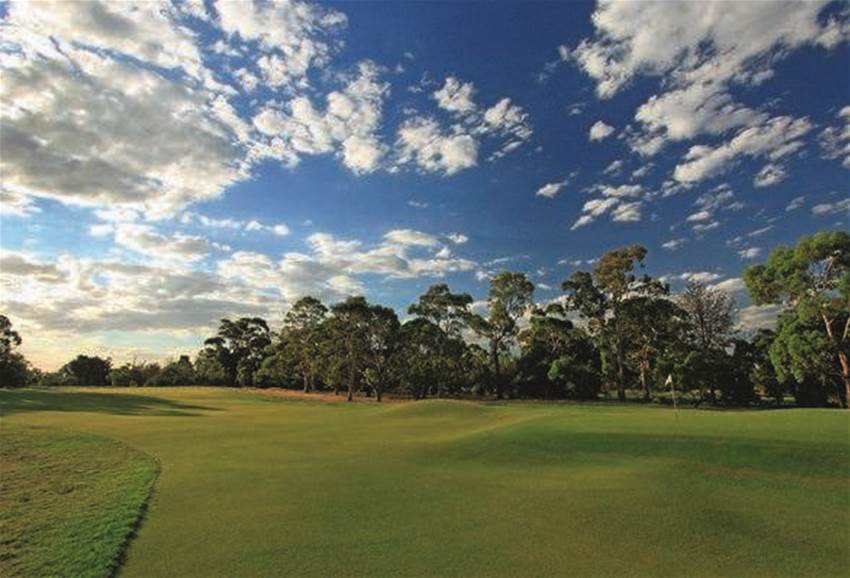





_15th_hole.jpg&h=115&w=225&c=1&s=1)




